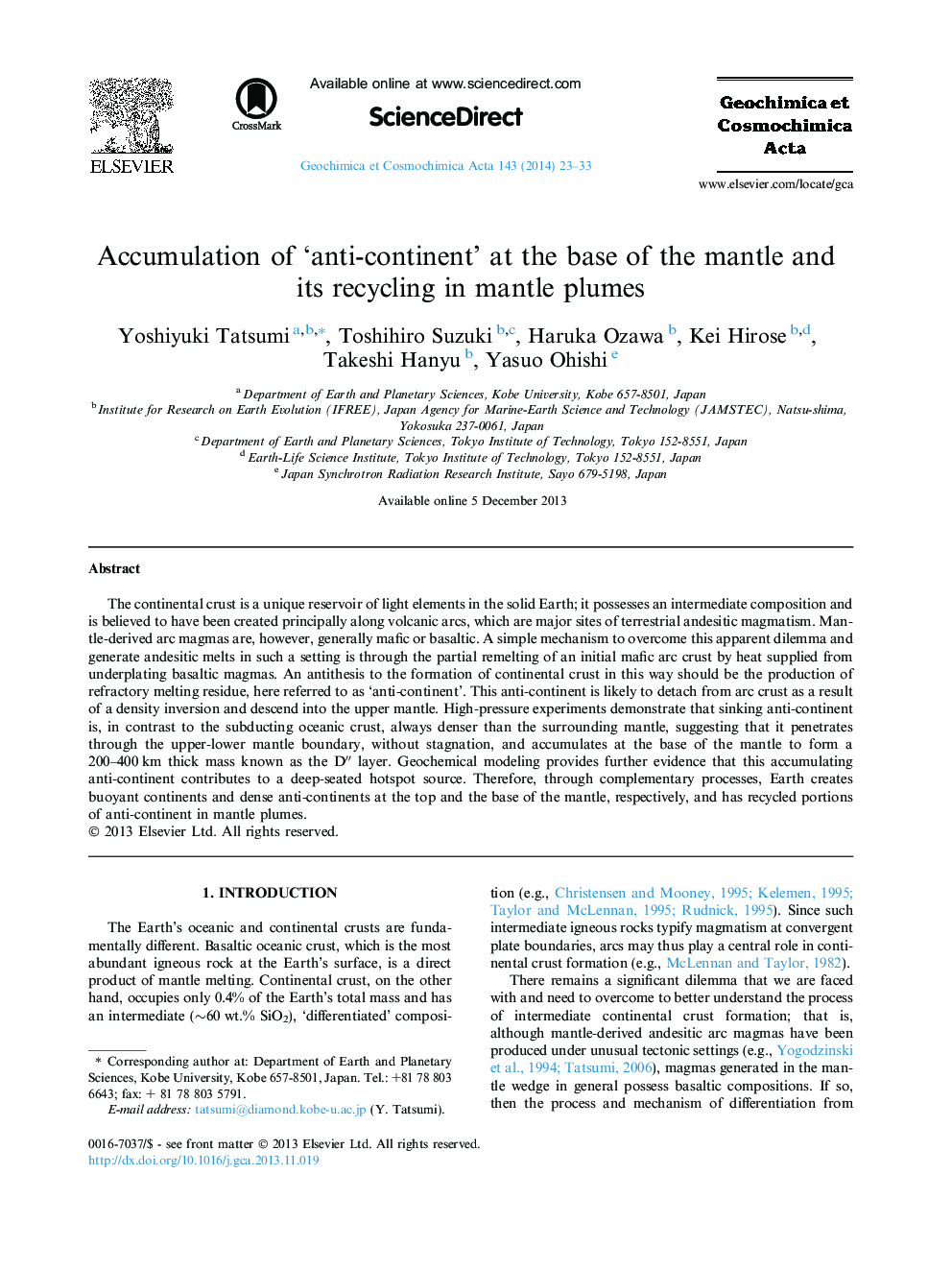| Article ID | Journal | Published Year | Pages | File Type |
|---|---|---|---|---|
| 4702055 | Geochimica et Cosmochimica Acta | 2014 | 11 Pages |
The continental crust is a unique reservoir of light elements in the solid Earth; it possesses an intermediate composition and is believed to have been created principally along volcanic arcs, which are major sites of terrestrial andesitic magmatism. Mantle-derived arc magmas are, however, generally mafic or basaltic. A simple mechanism to overcome this apparent dilemma and generate andesitic melts in such a setting is through the partial remelting of an initial mafic arc crust by heat supplied from underplating basaltic magmas. An antithesis to the formation of continental crust in this way should be the production of refractory melting residue, here referred to as ‘anti-continent’. This anti-continent is likely to detach from arc crust as a result of a density inversion and descend into the upper mantle. High-pressure experiments demonstrate that sinking anti-continent is, in contrast to the subducting oceanic crust, always denser than the surrounding mantle, suggesting that it penetrates through the upper-lower mantle boundary, without stagnation, and accumulates at the base of the mantle to form a 200–400 km thick mass known as the D″ layer. Geochemical modeling provides further evidence that this accumulating anti-continent contributes to a deep-seated hotspot source. Therefore, through complementary processes, Earth creates buoyant continents and dense anti-continents at the top and the base of the mantle, respectively, and has recycled portions of anti-continent in mantle plumes.
